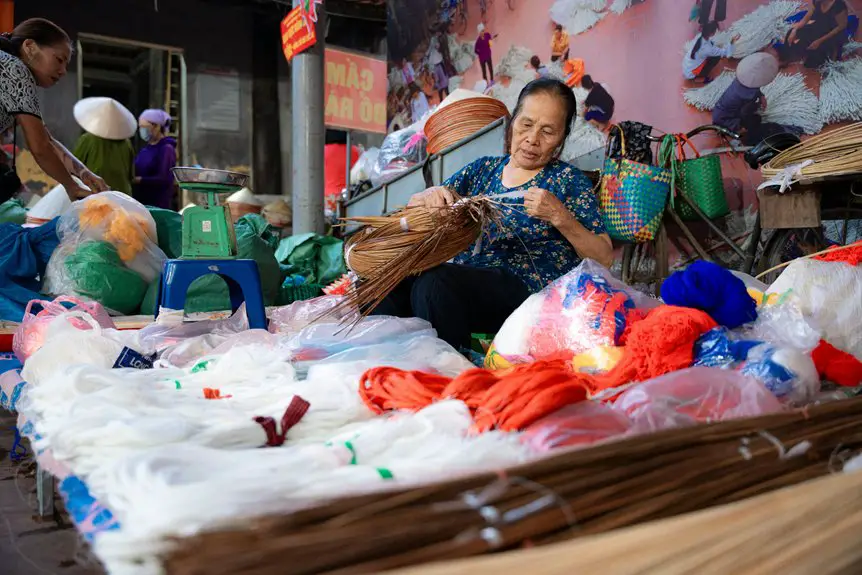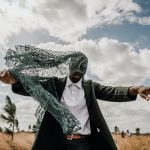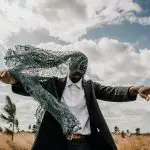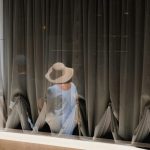When it comes to choosing waterproof fabrics that still breathe, you’re traversing a nuanced landscape. It’s not just about keeping dry; it’s about comfort and functionality in various conditions. You’ll want to understand the key properties and types of these fabrics to make an informed choice. As you explore your options, consider what features will best suit your activities and environment. The right fabric can make all the difference in your experience.
Table of Contents
Key Takeaways
- Assess the waterproof rating: Choose fabrics rated above 5,000 mm for moderate to heavy rain to ensure adequate protection while remaining breathable.
- Consider breathability measurements: Look for fabrics with high MVTR and low Ret values for effective moisture management during intense activities.
- Select the right fabric type: Opt for Gore-Tex or eVent for superior waterproofing and breathability; avoid polyurethane-coated fabrics if breathability is a priority.
- Evaluate the fabric construction: Choose three-layer fabrics for the best balance of waterproofing and breathability, especially for demanding outdoor activities.
- Prioritize lightweight and flexible options: Lightweight fabrics enhance mobility and comfort, essential for prolonged outdoor use while maintaining breathability.
Understanding Waterproof Breathable Fabrics
When you’re choosing outdoor gear, understanding waterproof breathable fabrics is essential for staying comfortable in various weather conditions.
These fabrics keep water out while allowing moisture from your body to escape, preventing you from feeling clammy during physical activities. They often feature a unique structure that blocks liquid water but permits vapor to pass through.
This balance is vital, especially when you’re hiking, skiing, or engaging in any strenuous activity outdoors. By selecting the right fabric, you can enjoy your adventures without worrying about getting soaked or overheated.
It’s important to take into account how these fabrics perform in different environments to make the best choice for your needs.
With the right knowledge, you’ll be prepared for whatever the weather throws your way.
Key Properties of Waterproof Breathable Fabrics
When choosing waterproof breathable fabrics, understanding the waterproof ratings and breathability measurements is essential.
These properties determine how well a fabric protects you from moisture while allowing sweat to escape.
Let’s break down what these ratings mean and how they impact your comfort.
Waterproof Ratings Explained
How do you choose the right waterproof fabric for your needs?
First, understand waterproof ratings, which typically range from 1,000 mm to 20,000 mm. This measurement indicates how much water pressure the fabric can withstand before leaking.
For light rain, look for fabrics rated between 1,000 mm and 5,000 mm. If you’re facing moderate to heavy rain, consider ratings of 5,000 mm to 10,000 mm.
Fabrics above 10,000 mm are ideal for extreme conditions or prolonged exposure to wet environments.
Breathability Measurements Overview
Choosing a waterproof fabric isn’t just about its ability to keep water out; breathability is equally important.
Breathability measurements help you understand how well a fabric allows moisture vapor to escape, keeping you comfortable. Here are four key properties to take into account:
- Moisture Vapor Transmission Rate (MVTR): Measures how much moisture can pass through the fabric over a set time.
- Ret: Indicates resistance to moisture vapor transmission; lower values mean better breathability.
- Waterproof Rating: While it shows water resistance, it can affect breathability; find a balance.
- Fabric Structure: The weave or knit can influence both waterproofing and breathability.
Different Types of Waterproof Breathable Fabrics
While you may think all waterproof fabrics are the same, the truth is that they vary considerably regarding breathability and performance. You’ll find several types, each suited for different activities.
For instance, Gore-Tex is renowned for its excellent waterproofing and breathability, making it a go-to for outdoor enthusiasts. Then there’s eVent, which offers impressive moisture-wicking capabilities, ideal for intense activities.
If you’re looking for a budget-friendly option, polyurethane-coated fabrics can provide decent waterproofing but may compromise breathability.
Finally, consider softshell fabrics; they’re not entirely waterproof but offer better breathability, perfect for mild weather.
Construction and Layer Options
Understanding the types of waterproof fabrics sets the stage for exploring their construction and layering options.
When you’re choosing the right fabric, consider how the layers work together to provide both protection and breathability.
Here are four common construction and layer options:
- Single-Layer: Lightweight and simple, ideal for short-term use.
- Two-Layer: Combines a waterproof outer layer with a breathable inner lining, offering a balance of comfort and durability.
- Three-Layer: Features an inner membrane sandwiched between two outer layers, providing excellent waterproofing and breathability for demanding activities.
- Coated Fabrics: Often less expensive, these have a waterproof coating applied to a base fabric but can compromise breathability.
Choosing the right construction is vital for your comfort and performance.
Application and End-Use Considerations
When it comes to selecting waterproof fabrics, considering the specific application and end-use is essential.
Think about where you’ll be using the fabric. If you’re hiking or running, look for lightweight, breathable options that allow moisture to escape while keeping you dry. For marine environments, prioritize durability and resistance to saltwater.
If you’re creating outdoor gear, make certain the fabric can withstand abrasions and UV exposure. Additionally, consider temperature ranges; some fabrics perform better in cold conditions, while others excel in warmer climates.
Don’t forget about ease of care—fabrics that resist stains and are machine washable can save you time. By aligning your fabric choice with its intended use, you’ll enhance both performance and comfort.
Comparing Leading Brands and Fabrics
When you’re choosing waterproof fabrics, understanding brand performance is key.
Each brand brings unique fabric technologies that can greatly impact your experience.
Let’s break down how these leading brands compare and what that means for your needs.
Brand Performance Overview
In the world of waterproof fabrics, choosing the right brand can greatly impact your experience and satisfaction.
You’ll want to evaluate several leading brands known for their performance and reliability. Here’s a quick overview to help you decide:
- Gore-Tex: Renowned for exceptional waterproofing and breathability, perfect for outdoor enthusiasts.
- eVent: Offers impressive moisture management, keeping you dry without sacrificing comfort.
- HyVent: A popular choice for budget-conscious shoppers, providing decent waterproof protection and breathability.
- Pertex: Known for lightweight options, ideal for those who prioritize packability without compromising on performance.
Fabric Technology Comparison
Choosing the right brand is just the beginning; understanding the technology behind waterproof fabrics is equally important.
When comparing leading brands, look closely at materials like Gore-Tex, eVent, and Dermizax. Gore-Tex is renowned for its durability and breathability, while eVent boasts superior moisture management, keeping you dry during intense activities. Dermizax, on the other hand, offers a unique stretch property, providing comfort without sacrificing waterproofing.
Each brand employs different methods, like microporous membranes or hydrophilic coatings, to achieve their performance.
Consider what activities you’ll be doing; if you’re hiking, you might prioritize breathability, whereas for skiing, waterproofness could be key. Ultimately, understanding these technologies will help you make an informed choice tailored to your needs.
Material and Sustainability Trends
As consumers become more environmentally conscious, the demand for sustainable waterproof fabrics has surged. You’ll find that many brands are now prioritizing eco-friendly materials, which not only protect you from the elements but also the planet.
Here are some trending sustainable materials to take into account:
- Recycled Polyester: Made from post-consumer plastic, it reduces waste and conserves resources.
- Organic Cotton: Grown without harmful chemicals, it’s a natural alternative that breathes well.
- Hemp: A durable and biodegradable option, hemp requires less water and pesticides.
- PFC-Free Treatments: These coatings offer water resistance without harmful chemicals, promoting safer production processes.
Choosing these materials not only enhances your gear but also supports a more sustainable future.
Tips for Choosing the Right Fabric for Your Needs
Selecting the right waterproof fabric can greatly impact your comfort and performance, especially when you’re outdoors. Start by considering the activity you’ll be doing. For intense activities, look for fabrics with high breathability to manage moisture and temperature. It’s also essential to check the waterproof rating; a higher rating means better protection against the elements.
Next, think about the weight and flexibility of the fabric. Lighter materials are great for mobility, while heavier ones may provide added durability.
Don’t forget to evaluate the fabric’s texture and feel—comfort is key! Finally, consider sustainability; fabrics made from recycled materials can be both functional and eco-friendly.
Frequently Asked Questions
How Do I Maintain Waterproof Breathability in Fabrics?
To maintain waterproof breathability in fabrics, you should regularly clean them according to care instructions, avoid harsh detergents, and store them properly. This helps preserve their performance and extends the life of your gear.
Can Waterproof Fabrics Lose Breathability Over Time?
Yes, waterproof fabrics can lose breathability over time due to wear, accumulation of dirt, or degradation of coatings. Regular cleaning and proper care can help maintain their performance and extend their lifespan.
Are All Waterproof Fabrics Suitable for Extreme Sports?
Not all waterproof fabrics are created equal; some can feel like a suffocating raincoat during extreme sports. You need to seek materials that balance protection and breathability, ensuring you stay comfortable while pushing your limits.
How Do Weather Conditions Affect Fabric Performance?
Weather conditions greatly affect fabric performance. When it’s hot, moisture builds up, making breathability essential. In cold or wet conditions, insulation and waterproofing become critical, impacting your comfort and protection during outdoor activities.
What Is the Lifespan of Waterproof Breathable Fabrics?
They say nothing lasts forever, and waterproof breathable fabrics typically last 3 to 10 years, depending on care and usage. Regular maintenance and proper storage can extend their lifespan, keeping you dry and comfortable longer.
- A Review of the American Apparel Gabardine Tennis Skirt - June 24, 2025
- How to Wear a Black Gabardine Trench Coat for Maximum Impact - June 24, 2025
- The Joseph Stretch Gabardine Leggings: An Elevated Essential - June 24, 2025







